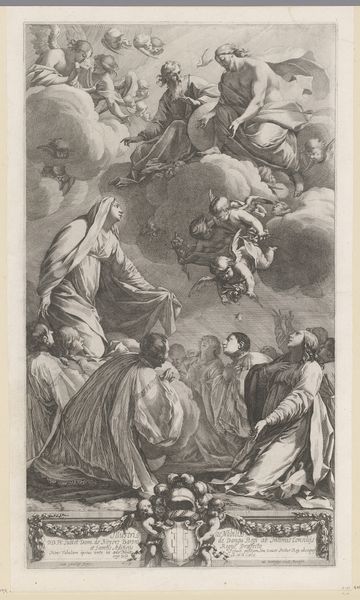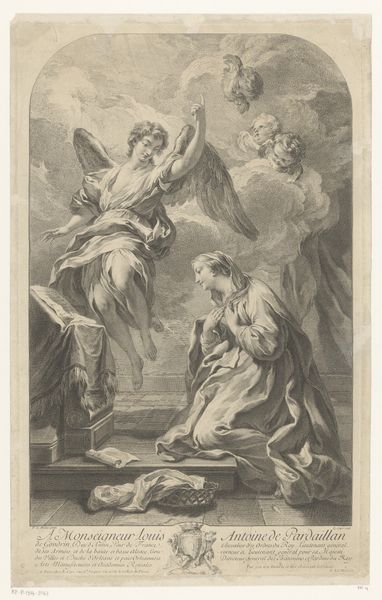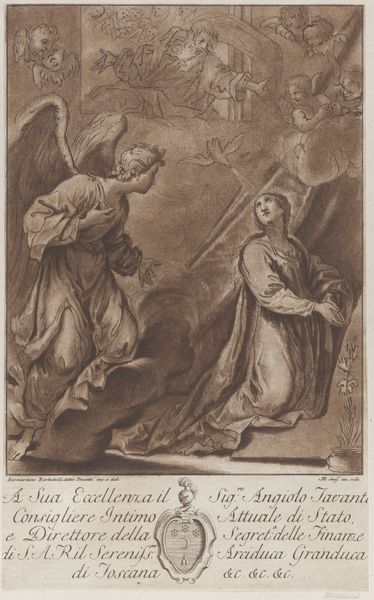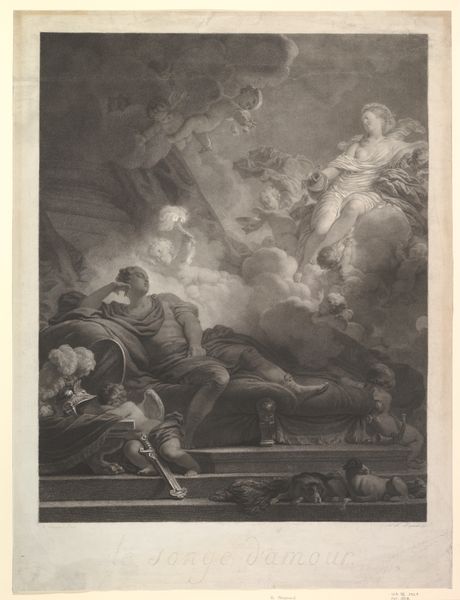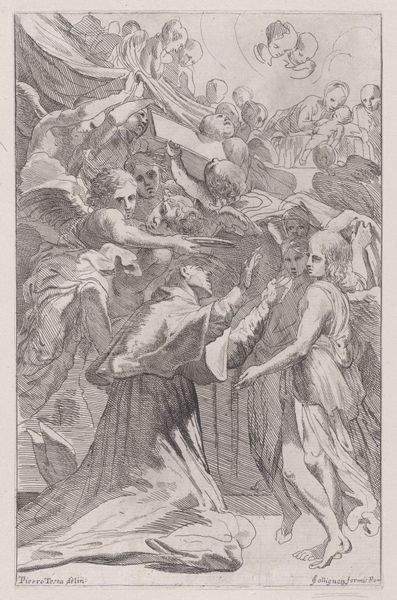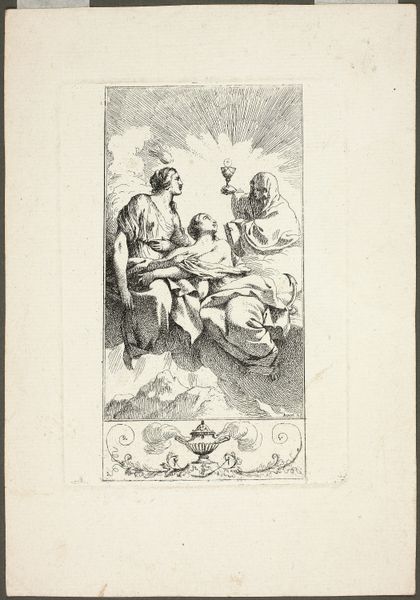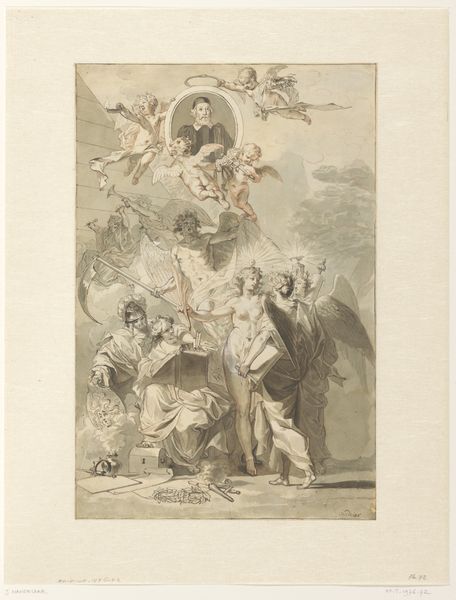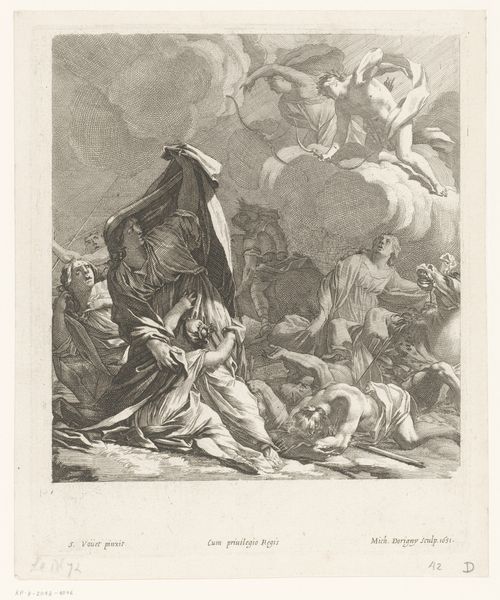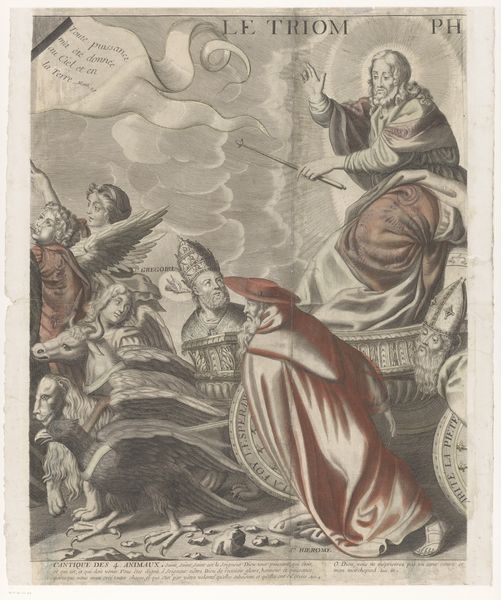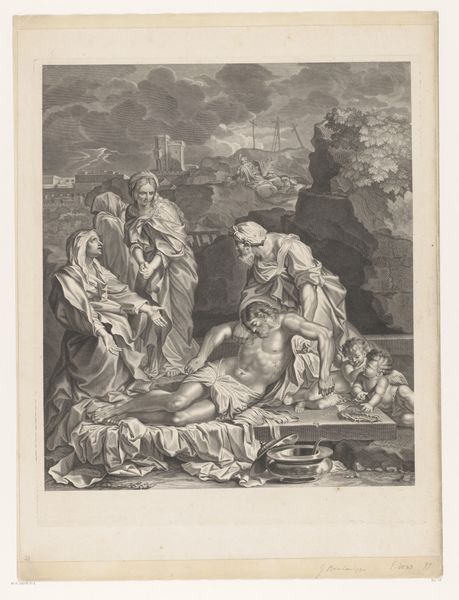
Fragments choisis dans les Peintures et les Tableaux les plus interessants des Palais et des Eglises d'Italie 1740 - 1791
0:00
0:00
Dimensions: Each print approximately: sheet: 9 1/4 x 6 11/16 in. (23.5 x 17 cm) image: 7 3/8 x 5 1/4 in. (18.7 x 13.4 cm)
Copyright: Public Domain
This print was made by Jean Claude Richard, the Abbé de Saint-Non, as part of his ambitious project to document Italian art. This image reproduces a painting by Jusepe de Ribera, a Spanish artist working in Naples in the 17th century. We see the eternal Father looking down on the Virgin Mary and Christ Child. Saint-Non’s project reflects the 18th-century Enlightenment interest in cataloging and classifying knowledge. It also speaks to the growing importance of art institutions. Saint-Non’s prints helped to make Italian art more widely accessible. The abbé was part of a network of artists and intellectuals. The prints were a collaborative effort. Some were made after drawings by well-known artists, and some were etched by others. This demonstrates the social and institutional context in which art is made. We can learn more about this by looking at archival documents, letters, and other historical sources. These resources help us to understand the meaning and significance of art in its own time.
Comments
No comments
Be the first to comment and join the conversation on the ultimate creative platform.
